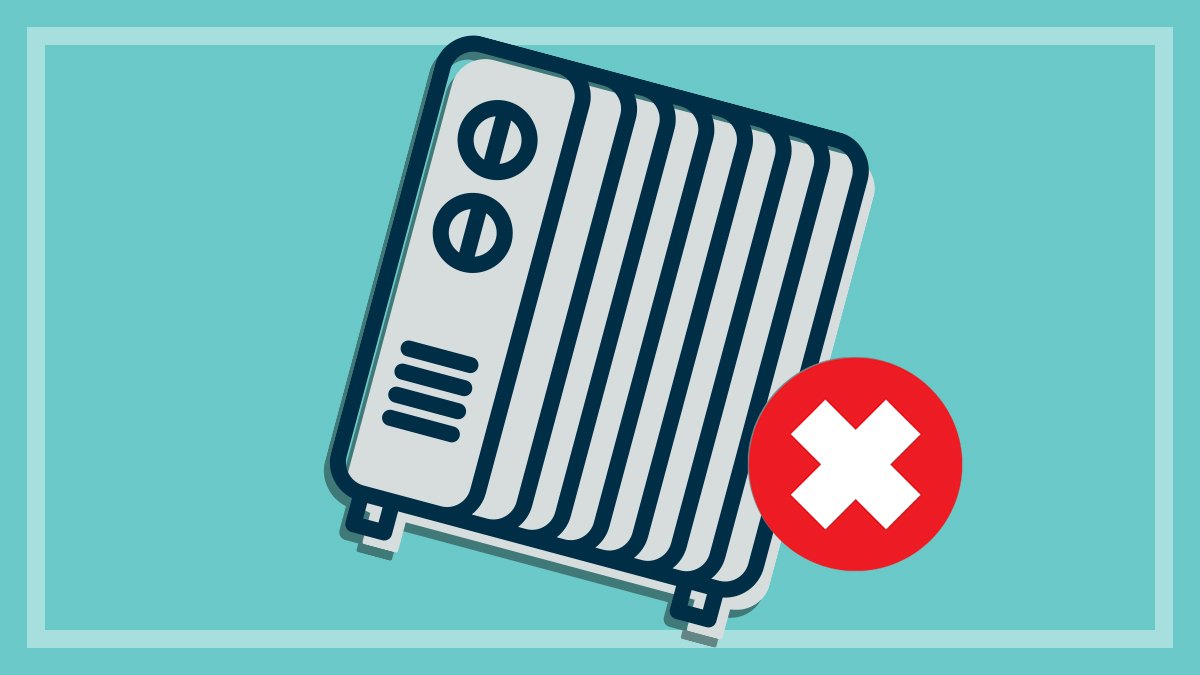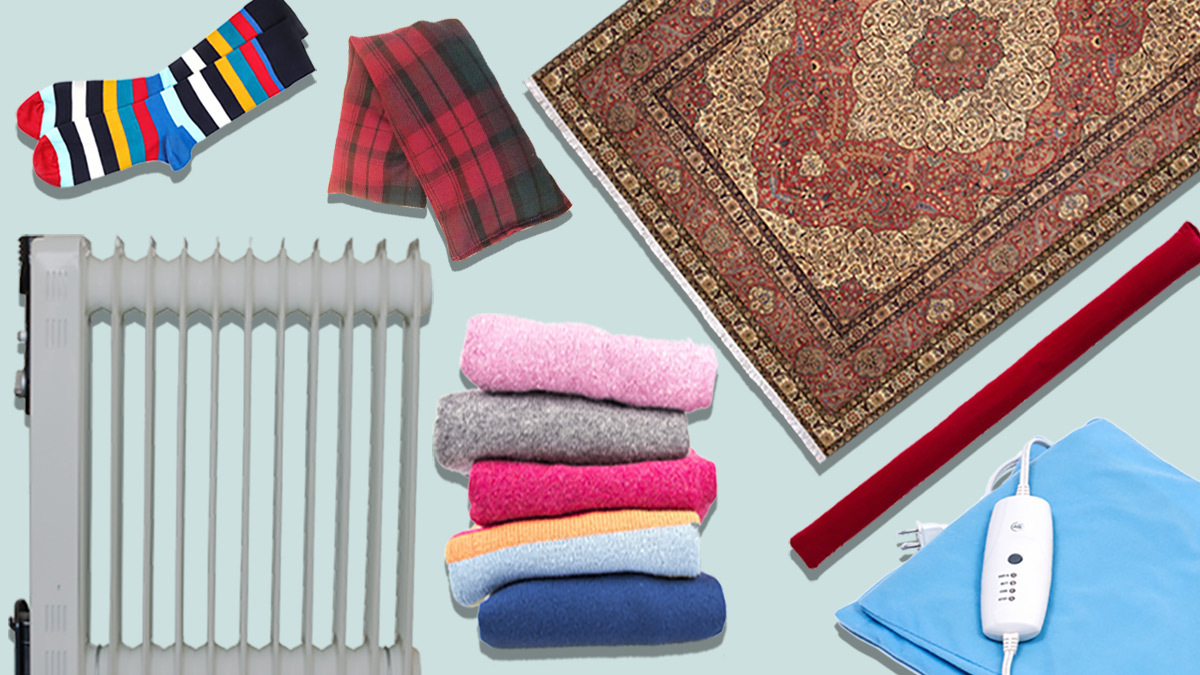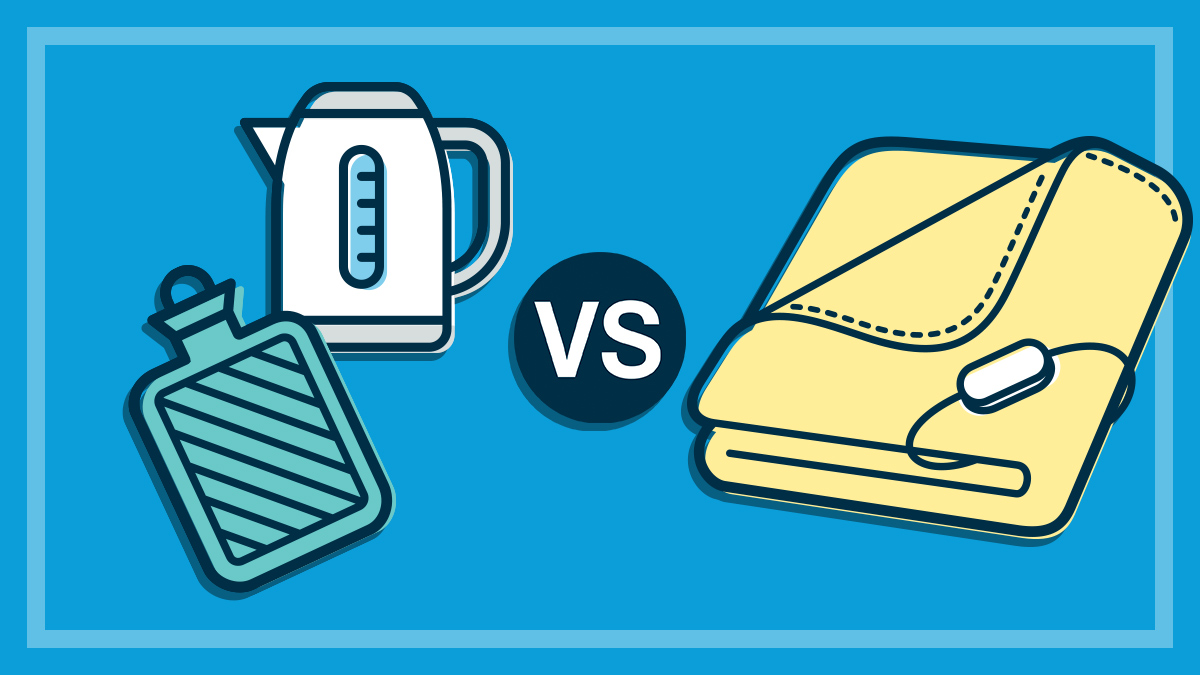Get our independent lab tests, expert reviews and honest advice.
10 home heating mistakes costing you money right now

With the news that power prices are set to rise even higher in the new financial year (due to the Australian Energy Regulator lifting the caps on how much retailers can charge for electricity), Australian households are bracing for big heating bills this winter.
With cost of living pressures top of mind for many of us, it’s more important than ever to not only shop around to get the best deal from your energy provider, but also be clever about how keep your home (and yourself) toasty warm.
No one wants to get the nasty shock of a high heating bill at the end of a cold spell. Whether you’re buying a new heater, using an older one or wondering what the best and most efficient way to heat your home is, our experts are here to help with a checklist of things you can do to avoid burning a hole in your wallet over winter.
CHOICE heating expert Chris Barnes reveals the common heating mistakes many of us make – plus smart tips to keep your budget on track.

1. Assuming expensive models are always the best
Ready for a burning-hot revelation? Our product testing often reveals retail price isn’t the best indicator of performance. So splashing cash on a high-end heater or air con without doing your research could still leave you out in the cold.
The recommended models in our electric heater tests range in price from less than $100 up to over $900 so there are good options at different price points.
Our product testing often reveals retail price isn’t the best indicator of performance
We’ve also uncovered more expensive units that produce disappointing results in our rigorous testing, so it’s important to remember that just because a heater is expensive or from a well-known brand, it isn’t necessarily going to give you the best value for money.
Having said that, it’s also worth keeping in mind that many budget models are poor performers, so it pays to do your research and check expert reviews.
Want to avoid buying a hot mess? Check our reviews of electric heaters (more models to be added soon) and air conditioners.
2. Forgetting to factor in running costs
Don’t just look at the price tag when you buy. Our testing reveals heaters can have vastly different running costs that will have an ongoing effect on your bottom line.
In our reviews, our experts have found the cost of running an electric heater over winter can vary by more than $300 between models, depending on the brand, size and design of heater (based on an estimated 500 hours of use and an electricity price of 40c/kWh).
It’s therefore vital to check reviews before you buy (more models will soon be added to our electric heater reviews), and keep an eye on how much you’re using your heater.
3. Not using reverse mode on your ceiling fans
Think ceiling fans are just for summer heatwaves? Think again.
Switch your fans to reverse or winter mode (clockwise) and use them in combination with your heating system. This will help distribute the hot air more evenly around the room, so it’s not just hanging around the ceiling where it’s no use to your cold feet.
Our lab analysis shows that, used this way, your heater has to do far less work to maintain a constant temperature, which means lower power consumption and lower bills.
Find out more about this genius hack and check out our ceiling fan reviews.

4. Not using your air conditioner for heating
If you’re wondering whether you should be using an electric heater or your air conditioning to warm your home this winter, CHOICE experts have you covered.
Although electric heaters are convenient and have cheaper upfront costs, reverse-cycle air conditioners are a more efficient heating option and can save you big bucks on your energy bills in the long run.
If you’re considering making the investment, check out our pros and cons analysis of electric heaters versus reverse-cycle air conditioners.
5. Constantly cranking up your air con temperature
The cost of using reverse-cycle air conditioning in your home over a year in an average climate zone (including Sydney, Adelaide and Perth) can range from as little as around $150 for a small model to over $1100 for a large one. These figures are based on the energy usage for each model as calculated for the Zoned Energy Rating Label (ZERL) at an electricity price of 40c/kWh.
To give you optimal warmth for the cheapest price, Chris says you should try to stick to a difference of about 8°C between the temperature on your reverse-cycle air conditioner and the outside temperature (easy enough in the more temperate parts of Australia).
Each degree warmer usually adds about 10% to the running cost of your air conditioner
Basically, the harder your air conditioner has to work to heat your room, the more electricity it’s going to use – and the more it will cost you.
As a helpful rule of thumb, each degree warmer usually adds about 10% to the running cost of your air conditioner.
6. Neglecting your heater and air con maintenance
Even heaters and air cons need a little love to work their very best. Regularly cleaning your air conditioner (following our handy air con cleaning guide) or heater means better energy efficiency and lower running costs.
This is because the more clogged the dust filters and the interior of the machine become, the harder it has to work (and the more energy it uses) to move the air and heat your home.
Getting out the duster and spending a bit of time on a little maintenance can go a long way. It doesn’t just apply to air cons, by the way – find out how why cleaning your clothes dryer, dishwasher and vacuum can save you.
7. Using your heater to dry your washing
On a freezing night, it’s tempting to plonk yourself in front of your heater or pop the wet washing right in front of it, or even directly on it – but it will do your heating bill no favours.
As well as being a potential fire hazard, any obstruction will restrict or block the flow of hot air around your home. This means your heater will take longer to get the temperature up.

8. Letting draughts in
Tracking down any draughts in your home, particularly around doors and windows, then sealing them up, will help keep your home warmer and save on energy bills. Likewise, keeping windows securely fastened or even locked can really help.
Cover gappy floorboards with rugs, close curtains and, if necessary, do a bit of simple DIY where the cold air is getting in. Use products such as silicone sealant, weather seal tape or draught strips from the hardware store to fill gaps, or use an old-fashioned door snake to keep the cold out.
CHOICE tip: To detect a draught, light a candle or incense stick and run it along the gaps under doors and around windows. A draught will become obvious as the flame flickers or smoke blows around.
9. Ignoring insulation
When it comes to keeping all that lovely warm air inside your home, insulation is a no-brainer – especially as 25–35% of an uninsulated home’s warmth is lost through the roof in winter.
“Average households that install wall, floor and ceiling insulation can save hundreds of dollars on energy bills each year,” says Chris.
You can call in the professionals, but ceiling and underfloor insulation can often be done by a capable handyperson, too.
10. Not budgeting for increased energy costs
The type of heating you’re using, the specific model of the appliance you own and how often you’re using it will all have an impact on your energy bills at the end of winter. As will the fact that energy prices across the board are steadily increasing.
If you live in a particularly cold part of the country and you are cranking the heating, it’s a good idea to set some extra money aside so you don’t suffer from a nasty shock when your bill arrives.
In the 2025-26 Federal budget, there is some short term relief for Australian households with the government announcing an extension to the Energy Bill Relief fund. Australian households and eligible small businesses with electricity bills may receive up to $150 in energy bill rebates from 1 July 2025 to the end of 2025.
But with running costs for electric heaters alone reaching into the hundreds over winter (depending on the model you use), it’s wise to do what you can to keep your bills in check and be mindful you might need to put some extra money aside.
Read more below about the type of heating we recommend as being the most efficient. Plus, more on how you can save on your heating bills.






